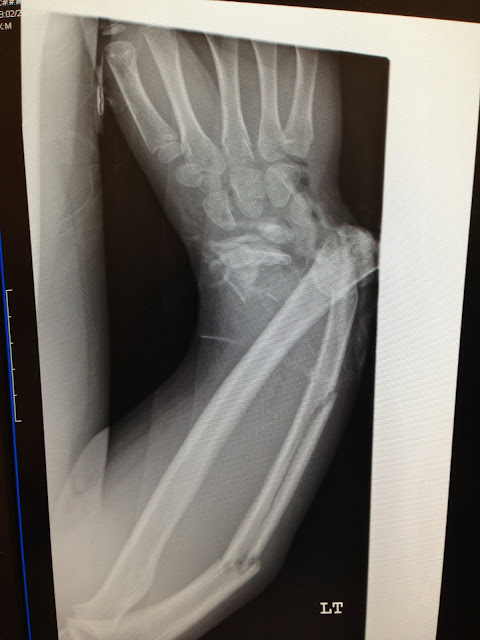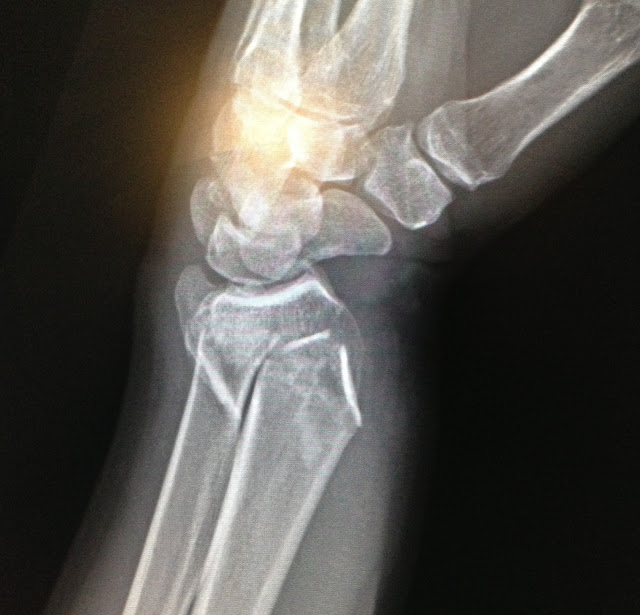This week we'll talk about one of the more frequently seen FOOSH related injury areas--the wrist. And you can hurt your wrist from going over the handlebars, tripping while trail running, or really any fall while out on the trails.
Your wrist is made up of the bones of your forearm; radius and ulna, and the carpal bones of your hand. Obviously a picture is worth a thousand words, so this will show you what those bones are.
 |
| Wrist x-ray with labeled osseous anatomy Contributed by John Copeland, DO |
Sometimes a wrist injury is obvious, and there are broken bones seen on an x-ray, such as in these examples:
Again, those are pretty obvious examples, and you certainly wouldn't need to be a radiologist to see that there's a problem.
Unfortunately, x-rays don't always tell the full story. If there is tenderness in a specific area known as the "anatomic snuff box," you could still have a broken bone that didn't show up.
And yes, this WAS named a "snuff box," because back in the mid-1800's, people would apparently put powdered tobacco in this area to sniff it, sort of like a precursor to body shots.
You can identify your snuff box by sticking your thumb out to the side, it's the depression between the two tendons of the extensor carpi radialis longus/pollicis longus and the extensor carpi radialis brevis/pollicis brevis muscles.
One of the carpal bones known as the scaphoid bone (sometimes called the navicular bone) can be injured from a FOOSH injury, but look normal on an x-ray. It's very important to see if the scaphoid bone is injured is by pressing on the snuff box during a physical examination.
Anyway, accidents happen, and putting your hands out when you're falling is a natural response. Hopefully, if this happens to you, you'll be able to have a good "'tuck and roll," and avoid a significant injury.
Out on the trails, support and stabilize an injury with an ACE wrap, triangular bandage as a sling, and moldable splint. You'll just want to splint in a position of comfort, and supporting an injury will help reduce the pain while you get out of the woods to someplace where you can get x-rays.
Most of the time, normal x-rays will mean that someone has a sprain or contusion--which can still hurt, but your take home message it to check your snuff box!
Please remember, the information presented here, including but not limited to, text, graphics, images and other material contained on this website are for informational purposes only. No material on this site is intended to be a substitute for professional medical advice, diagnosis or treatment.








Comments
Post a Comment